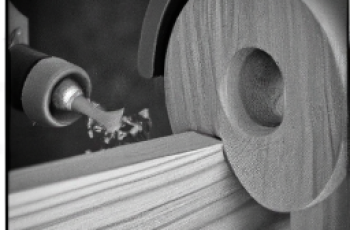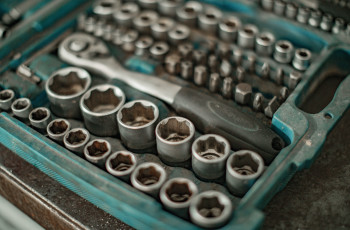If you’re a woodworking enthusiast, you likely know the importance of having the right tools. One versatile tool that often gets overlooked is the bench grinder. With its powerful motor and abrasive wheels, a bench grinder can be a game-changer for your woodworking projects. From sharpening your chisels to shaping and polishing wood, this article will show you how to harness the full potential of a bench grinder in your woodworking journey. Get ready to elevate your craft and achieve precise and professional results like never before.
Safety Precautions
Wearing Protective Gear
When using a bench grinder for woodworking, the first and most important safety precaution is to wear the appropriate protective gear. This includes safety glasses to protect your eyes from sparks and debris, a dust mask to prevent inhalation of fine particles, and ear protection to reduce the noise produced by the grinder. Additionally, it is advisable to wear gloves to protect your hands from the grinding wheel.
Securing the Workpiece
To ensure safety while using a bench grinder, it is crucial to securely clamp the workpiece before starting the grinding process. This will prevent it from moving or shifting during operation, reducing the risk of accidents or injury. Using clamps or a vise to firmly hold the wood in place will allow you to maintain control and achieve more accurate results.
Inspecting the Grinder
Before using a bench grinder for woodworking, it is essential to inspect the machine for any signs of damage or wear. Check the power cord for fraying or exposed wires, and ensure that the grinding wheels are in good condition. Any cracked or damaged wheels should be replaced before operating the grinder. It is also important to make sure that the grinder is securely mounted and stable on the bench.
Maintaining a Clean Workspace
Keeping a clean and organized workspace is not only important for efficiency but also for safety. Remove any debris or objects from the work area that could pose a tripping hazard. Regularly sweep away wood dust or chips that accumulate near the grinder to prevent it from interfering with its operation. A clutter-free workspace will minimize the risk of accidents and allow you to focus on your woodworking tasks.
Choosing the Right Grinder
Types of Bench Grinders
When selecting a bench grinder for woodworking, there are two main types to consider: the standard bench grinder and the variable-speed bench grinder. The standard bench grinder operates at a fixed speed, typically between 3,000 and 3,600 RPM (revolutions per minute). On the other hand, the variable-speed bench grinder allows you to adjust the speed, providing more versatility for different applications.
Motor Power and RPM
The motor power and RPM (revolutions per minute) of a bench grinder are crucial factors to consider. Higher motor power will provide more grinding force, allowing you to work on tough materials with ease. Additionally, RPM determines the speed at which the grinding wheels spin. For woodworking purposes, a grinder with a moderate RPM range, preferably between 3,000 and 3,600, is suitable for most applications.
Wheel Size and Material
The size and material of the grinding wheels are essential considerations when choosing a bench grinder for woodworking. Wheel sizes typically range from 6 to 8 inches in diameter. For general woodworking tasks, a 6-inch wheel is usually sufficient. However, if you are working on larger pieces, an 8-inch wheel may provide more surface area for grinding. Additionally, consider the material of the grinding wheels, with aluminum oxide being a common choice for woodworking purposes due to its durability and versatility.
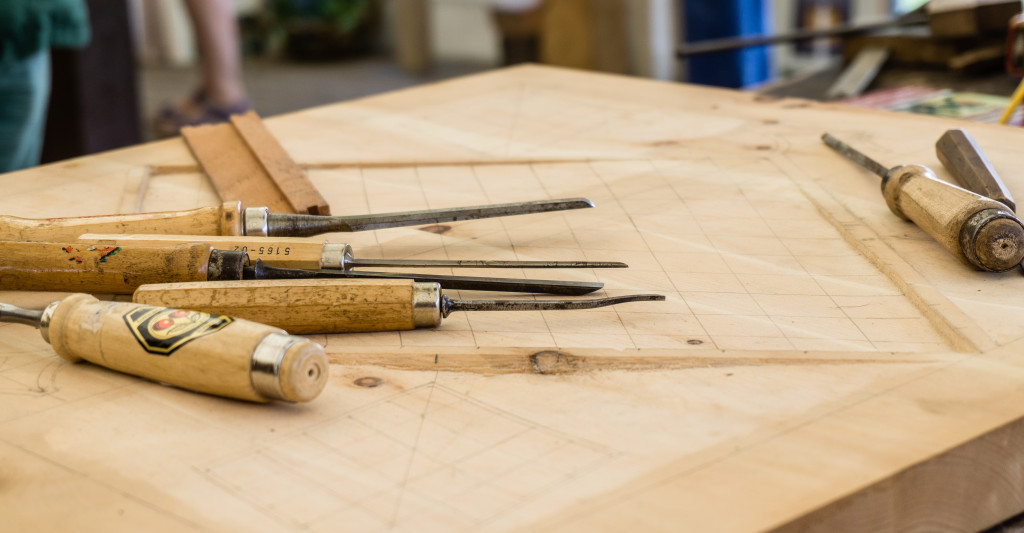
Setting Up the Bench Grinder
Choosing the Right Location
Selecting the appropriate location for your bench grinder is crucial for both safety and convenience. The grinder should be placed on a stable and level surface to ensure stability during operation. Ideally, position the grinder in an area with good lighting and ventilation to promote a comfortable and safe working environment. Avoid working near flammable materials or liquids to prevent accidents and potential hazards.
Securing the Grinder
Once you have chosen the location for your bench grinder, it is important to secure it properly. This can be done by attaching the grinder to a solid workbench or mounting it on a sturdy bench grinder stand. Use the appropriate bolts or clamps to ensure that the grinder is securely fastened in place. Securing the grinder will prevent it from vibrating or moving during use, minimizing the risk of accidents.
Adjusting Tool Rests
Tool rests are essential components of a bench grinder that provide support and stability for the workpiece. Before using the grinder, ensure that the tool rests are properly adjusted. They should be positioned close to the grinding wheels but not touching them. Adjust the tool rests to the desired angle and distance from the wheels, depending on the specific woodworking task at hand. This will allow for more precise grinding and improved safety.
Installing Safety Shields
Safety shields are crucial safety features that protect you from sparks, debris, and potential contact with the grinding wheels. Check if your bench grinder comes with safety shields or if they can be purchased separately. Install the shields according to the manufacturer’s instructions, ensuring that they cover the grinding wheels completely. Safety shields should always be in place during operation to prevent any accidents or injuries.
Preparing the Workpiece
Measuring and Marking
Before grinding the workpiece, it is important to measure and mark it accurately. Use a tape measure or ruler to determine the desired dimensions of the wood, ensuring precise and consistent results. Mark the wood using a pencil or marking gauge to indicate the areas where material needs to be removed or shaped. Taking the time to measure and mark the workpiece will help you achieve the desired outcome and avoid mistakes.
Selecting the Right Wood
Choosing the appropriate type of wood for your woodworking project is crucial for achieving the desired results when using a bench grinder. Different woods have varying hardness and characteristics, which can affect the grinding process. Hardwoods such as oak or walnut may require more grinding force and time compared to softer woods like pine or cedar. Consider the end use of the wood piece and select the appropriate wood species accordingly.
Using a Jig or Template
For more complex woodworking tasks, using a jig or template can greatly enhance accuracy and precision. A jig is a device or tool used to guide the workpiece for consistent and repeatable grinding. It helps maintain proper angles and shapes while reducing the risk of unwanted deviations. Templates, on the other hand, are pre-cut patterns or guides that can be traced onto the workpiece, ensuring consistent results. Using jigs or templates can be especially useful when grinding multiple pieces with identical shapes or angles.
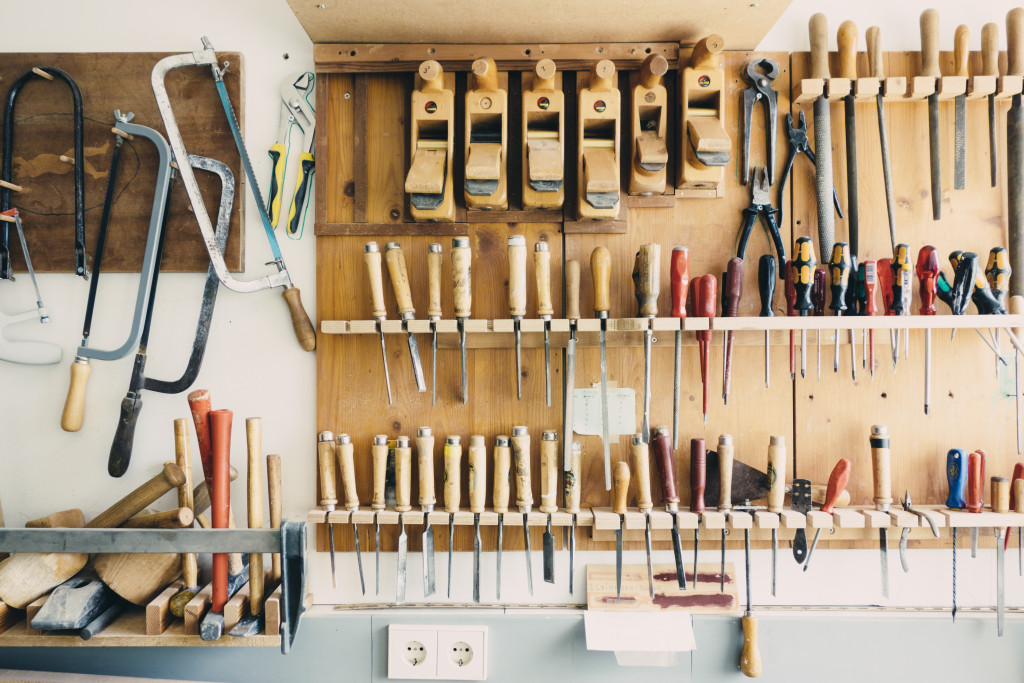
Grinding Techniques
Rough Shaping and Smoothing
One of the primary uses of a bench grinder in woodworking is rough shaping and smoothing of the workpiece. This involves removing excess material or creating rough contours and curves. Start by positioning the tool rest at the desired angle and distance from the grinding wheel. Hold the workpiece firmly against the wheel, making sure to maintain a steady, controlled movement. Apply even pressure and let the grinder do the work, gradually shaping and smoothing the wood to achieve the desired result.
Grinding Bevels and Angles
In addition to rough shaping and smoothing, a bench grinder can also be used to grind bevels and angles on the workpiece. To achieve precise bevels, adjust the tool rest to the desired angle and position the workpiece against the grinding wheel accordingly. Use light, controlled movements and apply consistent pressure to create uniform bevels. When grinding angles, mark the desired angles on the workpiece and make controlled passes against the wheel until the desired angle is achieved.
Removing Rust and Paint
A bench grinder can also be utilized for removing rust and paint from metal surfaces. This is particularly useful for restoring vintage or old woodworking tools or furniture with metal components. Attach a wire wheel or brush to the grinder and adjust the tool rest accordingly. Gently guide the metal surface against the spinning wire wheel, allowing it to remove the rust or paint. Take care not to apply excessive pressure to avoid damaging the underlying metal.
Finishing Touches
Sanding and Polishing
Once the rough grinding is complete, the next step is to refine the surface by sanding and polishing. Transition from the bench grinder to sandpaper, starting with a coarse grit and gradually progressing to finer grits. Sand the wood surface in the direction of the grain, applying even pressure for an even finish. Finally, use a polishing compound or wax to bring out the natural beauty of the wood and add a smooth, polished appearance.
Sharpening and Honing
A bench grinder can also be used for sharpening and honing woodworking tools such as chisels, plane blades, or carving knives. When sharpening, position the tool rest at the correct angle for the desired edge bevel. Hold the tool securely against the grinding wheel and move it back and forth to create a sharp edge. For honing, use a leather strop or honing wheel with a polishing compound to refine and polish the edge. This will ensure that your woodworking tools stay sharp and perform at their best.
Creating Textures or Patterns
For more creative woodworking projects, a bench grinder can be used to create textures or patterns on the wood. Attach a wire wheel or rotary tool with a burr or carving attachment to the grinder. Experiment with different wheel widths, shapes, and speeds to achieve the desired pattern or texture. This technique can add unique visual interest to your woodwork and allow for artistic expression.
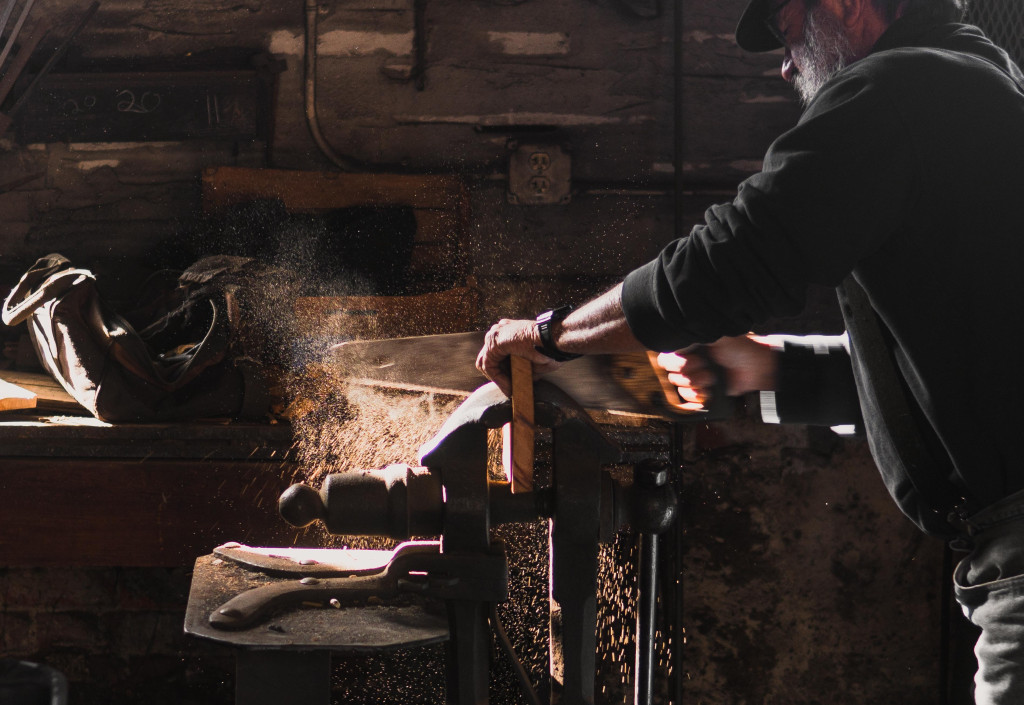
Maintaining the Bench Grinder
Cleaning and Lubricating
Regular cleaning and lubrication are essential for maintaining the performance and longevity of your bench grinder. After each use, wipe down the grinder to remove any dust or debris that may have accumulated. Use a clean, dry cloth to wipe the grinding wheels and tool rests. Lubricate any moving parts or mechanisms according to the manufacturer’s instructions. Proper cleaning and lubrication will ensure that your bench grinder operates smoothly and efficiently.
Replacing Grinder Wheels
Over time, the grinding wheels on a bench grinder may become worn or damaged. It is important to regularly inspect them for signs of wear or cracks and replace them as needed. To replace the grinding wheels, first, disconnect the grinder from the power source. Remove the wheel cover and loosen the nut or bolt that holds the wheel in place. Carefully remove the old wheel and replace it with a new one of the same size and type. Follow the manufacturer’s instructions for proper installation and tightening of the new wheel.
Maintaining Electrical Components
The electrical components of the bench grinder, such as the power cord and switch, should be regularly inspected for any signs of damage or wear. Check the power cord for fraying or exposed wires, and replace it if necessary. Ensure that the switch operates smoothly and reliably. If you notice any issues with the electrical components, it is advisable to have a qualified professional inspect and repair the grinder to ensure safe and proper functioning.
Common Issues and Troubleshooting
Overheating and Sparks
Excessive heat and sparks during grinding can indicate a problem with the grinder or the grinding wheels. If the grinder becomes excessively hot or sparks are flying, it is essential to immediately stop and allow it to cool down. Check that the grinder is properly lubricated and that the grinding wheels are in good condition. If the problem persists, consult the manufacturer or a professional for further assistance.
Uneven Grinding
Uneven grinding occurs when the grinding wheels are not properly aligned or dressed. If you notice that the wood is not being ground evenly, check the alignment of the tool rests and adjust them as necessary. Additionally, ensure that the grinding wheels are dressed, which means removing any debris or buildup that may have accumulated on their surface. Uneven grinding can also be caused by a worn or damaged grinding wheel, so consider replacing it if needed.
Vibration and Noise
Excessive vibration or noise during the operation of a bench grinder can indicate an issue with the machine or a problem with the workpiece. Check that the grinder is securely mounted and that all components are tightened properly. Inspect the workpiece for any irregularities, such as knots or cracks, which may cause vibration or noise during grinding. If the problem persists, it is advisable to consult a professional for further evaluation and assistance.
Alternative Tools and Techniques
Hand Files and Rasps
Hand files and rasps are versatile hand tools that can be used as alternatives to a bench grinder for certain woodworking tasks. They allow for more precise control and are particularly useful for shaping and smoothing curved or irregular surfaces. Hand files and rasps come in a variety of shapes and sizes, allowing for greater flexibility and creativity in woodworking projects.
Power Sanders
Power sanders, such as belt sanders or orbital sanders, are another alternative to a bench grinder for certain woodworking applications. They are particularly effective for sanding and smoothing large surfaces or removing material quickly. Power sanders come with different grits and can be used to achieve different levels of smoothness, depending on the specific woodworking task.
Hand Planes and Chisels
Hand planes and chisels are traditional woodworking tools that can be used for shaping, smoothing, and refining wood surfaces. They allow for precise control and can produce exceptionally smooth finishes. Hand planes are effective for removing material quickly, while chisels are ideal for creating small details or intricate patterns in the wood. Using hand planes and chisels requires practice and skill, but they can add a personal touch to your woodworking projects.
Inspiring Woodworking Projects
Creating Fine Details
A bench grinder can be an invaluable tool for creating fine details in woodworking projects. From delicate carvings to intricate engravings, the precision and control offered by a bench grinder allow for the creation of stunning, one-of-a-kind details. Whether you’re working on furniture, decorations, or small woodworking pieces, using a bench grinder can elevate the quality and craftsmanship of your work.
Restoring Old Furniture
Restoring old furniture can be a fulfilling and rewarding woodworking project. A bench grinder can help in the restoration process by removing old finishes, rust, or adding subtle distressing to give furniture a vintage look. By combining the power and versatility of a bench grinder with other woodworking techniques, you can transform worn-out furniture into beautiful, functional pieces that can be enjoyed for many years to come.
Making Customized Joinery
Joinery is an essential aspect of woodworking, and a bench grinder can play a role in creating customized joinery. By carefully shaping and grinding wood pieces, you can create unique joinery designs that fit your specific woodworking project. From dovetail joints to mortise and tenon connections, a bench grinder can help achieve precise fits and enhance the overall strength and aesthetics of your joinery. Customized joinery adds a personal touch and elevates the quality of your woodworking projects.


